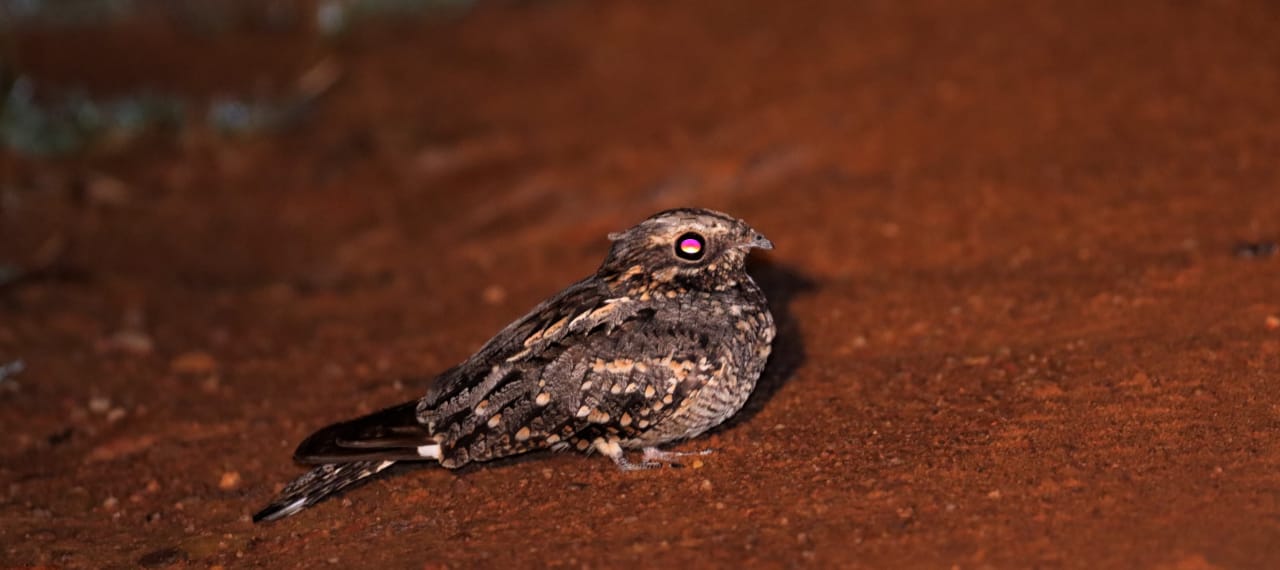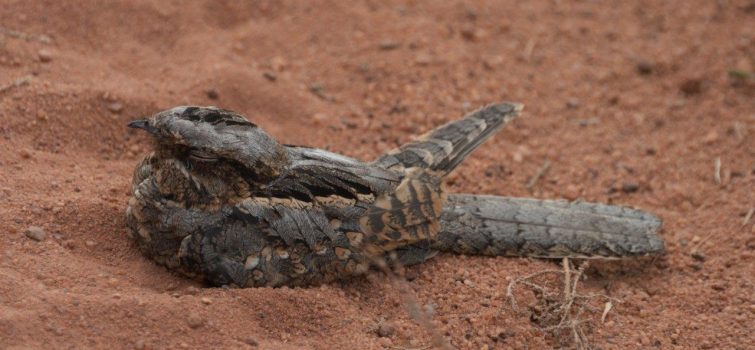Just Ask Us! Why do Nightjars sit on the Road at night, and so often?
Neil responds
There is much to be discussed on this matter, however the reason or reasons appear obvious once known.
Nightjars, as their name would suggest are nocturnal birds who spend their days well concealed, resting up either on branches of trees or on the ground. Camouflage is key.
Once night falls, they take to the air and spend the evenings hunting for food on the wing or avidly defending territories and nesting sites. Coming to the roads has many advantages for them.
Firstly, sitting in the open road, enhances potential predator detection. Having large eyes well designed and adapted for a nocturnal lifestyle, gives them a distinct advantage. However, the bright lights of a vehicle or the spotlight, leave them mesmerized for a while and the advantage set in their eye design, quickly becomes a limitation. Remove the light from them, and they quickly recover and take to the air.
Secondly, the roads during the day, trap heat, which is a welcome relief for the birds, who muscles have stiffened a little during the daytime resting ritual. Particularly in winter, sitting on the road aids blood flow and warms the body up quicker, allowing the birds to get more active, more quickly.
Another fascinating behaviour trait is born from their desire to sit on the road. If you think, sitting still on a branch or the ground during the day, cryptically camouflaged to blend you into your surroundings hides you from everything, you would be mistaken. Mites and other unwanted pests and parasites freely crawl or make use of the birds whilst they sit statue-like, patiently waiting for the sun to make way for the night. At nightfall, the birds make to the roads to relieve them of their new found travel companions. Whilst sitting on the road, they pickup Formicide ants and rub the ants through their feathers. As an act of disgrace in being manhandled, these ants will eject a type of chemical or acid from their metapleural glands, whose contents are primarily used to protect them from fungus and bacteria. The chemicals released by the ants, enable the nightjars to use them as an insect repellant against those who chose to use the birds as their private playground whilst the nightjars rested up.
This behaviour called ‘anting’ is fascinating and certainly is an ingenious way of making use of the resources that lie about you.


